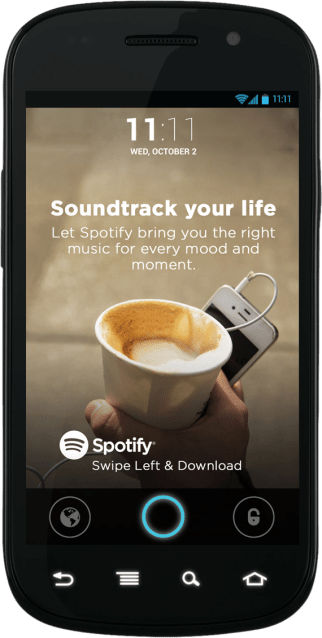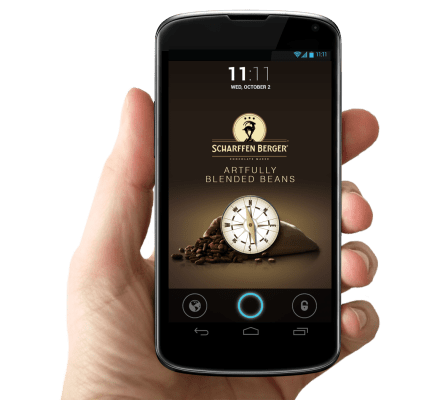Locket, the Android app that pays you (in tiny amounts) just for unlocking your smartphone, is today launching a toolkit for app developers that will allow them to publish their own content to users’ lock screens. That means when users see ads for apps on their phone’s screen, they can open up the app itself with just a swipe, similar to how a push notification works.
Launched this summer, Locket is an early mover in the U.S. market to bring the concept of lockscreen ads to Android users. The company competes with the likes of Seoul, South Korea-based LatteScreen, which only recently began targeting the American audience with its existing product. But Locket is already seeing some traction stateside – it recently hired Charity Sabater, formerly of Candy Crush-maker King, to lead sales, and says that it has grown its footprint to roughly 300,000 users since launching just a few months ago.
The idea, for those unfamiliar, is that of an opt-in experience where Locket displays ads on the phone’s lockscreen that you can choose to engage with or not by swiping to unlock your phone. These ads, for brands, businesses, movies, apps and more, can take users to websites, Facebook Pages, coupons, or movie trailers, for example, or they can just launch the app in question, as is the case with those publishers adopting the new Locket SDK.
 The company was founded in March by Yunha Kim, Paul Jang, and Christopher Crawford who were inspired to create a new market in mobile advertising for what they call “first-glance” ads. Locket serves over 10 million impressions every day, and to date, it has served over 1 billion impressions. It’s also seeing several big-name advertisers testing its service.
The company was founded in March by Yunha Kim, Paul Jang, and Christopher Crawford who were inspired to create a new market in mobile advertising for what they call “first-glance” ads. Locket serves over 10 million impressions every day, and to date, it has served over 1 billion impressions. It’s also seeing several big-name advertisers testing its service.
More than 20 advertisers have run campaigns to date, including Hershey’s, Sunny D, Sears, ZipCar, eBay, Spotify and others, and more than 80 percent of advertisers renew with Locket. On average, the CTR on their campaigns is anywhere from 3 to 5 percent, Kim notes.
Whether or not users click through, they’re still paid. At launch, this was 1 cent per swipe, capped at 3 cents per hour. That model has now changed. Instead, users receive 1 cent for the new, unique ad of the day. Explains Kim, “if we show users 30 different ads (because people check their phone 110 times on average), they get 30 cents. Sometimes we show 20 ads (20 cents), sometimes we show 40 ads (40 cents), depending on the ad inventory we have.” In other words, Locket only makes you money when it does.
She tells us that the idea for launching the Locket SDK came from when one of the top three movie app companies reached out to the startup with a request to use a Locket SDK to publish movie ads and commercials to users’ lockscreens.
At launch, the SDK is being adopted by five app publishers, but Locket isn’t allowed to name who, only saying that they are in “movies, entertainment, music, lifestyle as well as games.”
The SDK is also being made available for free to the top 10 apps that Locket is now working with, and Locket will continue to approve which publishers can and cannot use the SDK to serve lockscreen ads. Interested app publishers should reach out to Locket directly to learn more.
Update: Locket wanted to be sure that developers understand the new SDK is mainly for developers’ contents, instead of ads. For instance, a game developer could show the current leaderboard or user’s score. But the content appearing on the lockscreen is still a kind of an advertisement – as the company itself dubbed these before, the interactive content appearing there are “first-glance” ads. We declined to update the headline as requested, but are adding this note for clarity.
